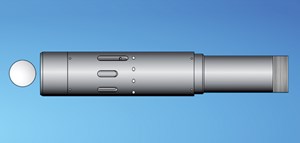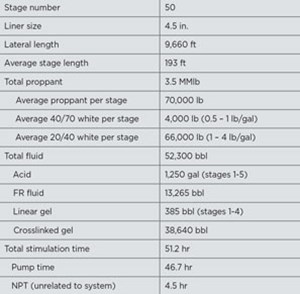Nine Energy stimulates 50-stage Divert-A-Frac system in Williston basin
The Williston basin has seen a full evolution of completion technology throughout its development, with increasing levels of science being applied to determine the best methodology. Although often referred to as a shale, the stimulation target is either the Middle Bakken, a dolomite/sandstone/siltstone layer between the upper and lower shales, or the Three Forks dolomite/mudstone/shale formation below.
The primary completion method used in these formations is open-hole, multi-stage systems, which use packers (hydro-mechanical or swellable) for external isolation between stages, and ball-activated frac sleeves for zonal treatment. Beyond the reduced time and cost of stimulation, an advantage of these systems is that they provide single-point entry per stage, enabling higher treatment rates and more control over fracture initiation and propagation. However, their main disadvantage is that they have inherent stage number limitations, due to available ball and seat increments, and associated pressure ratings.
STAGE COUNT
An independent operator working in Mountrail County, N.D., was looking to increase stage counts in its 10,000-ft, open-hole laterals to optimize reservoir treatment. The goal was to increase stage count from 35 to 50, without resorting to limited-entry (cluster) completions. To provide the operator with the desired system requirements, the service provider undertook a series of testing programs to validate its ability to provide 50 stages at the required pressure rating.
Divert-A-Frac Port Sub (DAFPS)-III frac sleeves were qualified with dissolvable metallic actuation balls for the ability to hold 5,000-psi pressure on ≤1/16-in. increments, Fig. 1. This testing focused on the worst case scenarios for each level of ball/seat overlap (0.03, 0.04, 0.045 and 0.5 in.). The test procedure was to increase pressure to ~5,200 psi and hold for 5 min., then determine the pressure required to lift the ball off seat. After this, each case was taken to failure. The successful scenarios were incorporated into the final system design.
With a 3-MMlb proppant stimulation planned, the service provider also determined whether seat erosion from the proppant would compromise the ability of the actuation balls to hold pressure. Computational fluid dynamics (CFD) analysis was performed, with proprietary software, on eight representative seat sizes spanning the 50-stage system. This analysis used an erosional model to determine wall material loss, based on impact angle and velocity from 1.5–2.5 million sand particle trajectory calculations that incorporated turbulence. Input variables included sand size, shape, density and volume, fluid density, viscosity and rate, and seat material and geometry.
The first 50-stage system was deployed successfully into a 20,580-ft wellbore with a 9,660-ft, 57/8-in. open-hole lateral. The 41/2-in. system included float equipment, 50 DAFPS-III frac sleeves, 50 swellable packers with a 5-ft elastomer length and a PPK liner hanger packer with a 20-ft polished bore receptacle (PBR), Table 1.
The stimulation job was completed, as designed, with all 50 DAFPS-III frac sleeves successfully opening and receiving an average of 70,000 lb of proppant (6%, 40/70; and 94%, 20/40 white sand) for a total of 3.5 MMlb. The proppant was delivered using an average 1,050 bbl per stage of primarily crosslinked gel for a total of 52,300 bbl. The stimulation treatments were pumped at rates of up to 30 bpm, as per the operator’s requirements. The total stimulation time for the job was just over 50 hr, with less than 9% non-productive time (NPT), unrelated to the system operation.
Although the operator has had 100% success using the service provider for its 35-stage open-hole systems, this was their first deployment of the company’s 50-stage Divert-A-Frac Open Hole Multistage Sleeve System. With the successful stimulation of 50 stages and positive production results, the operator plans to continue using this system design for additional wells in the Williston basin. ![]()
- Shale technology: Bayesian variable pressure decline-curve analysis for shale gas wells (March 2024)
- Using data to create new completion efficiencies (February 2024)
- Prices and governmental policies combine to stymie Canadian upstream growth (February 2024)
- U.S. producing gas wells increase despite low prices (February 2024)
- U.S. drilling: More of the same expected (February 2024)
- U.S. oil and natural gas production hits record highs (February 2024)
- Applying ultra-deep LWD resistivity technology successfully in a SAGD operation (May 2019)
- Adoption of wireless intelligent completions advances (May 2019)
- Majors double down as takeaway crunch eases (April 2019)
- What’s new in well logging and formation evaluation (April 2019)
- Qualification of a 20,000-psi subsea BOP: A collaborative approach (February 2019)
- ConocoPhillips’ Greg Leveille sees rapid trajectory of technical advancement continuing (February 2019)




